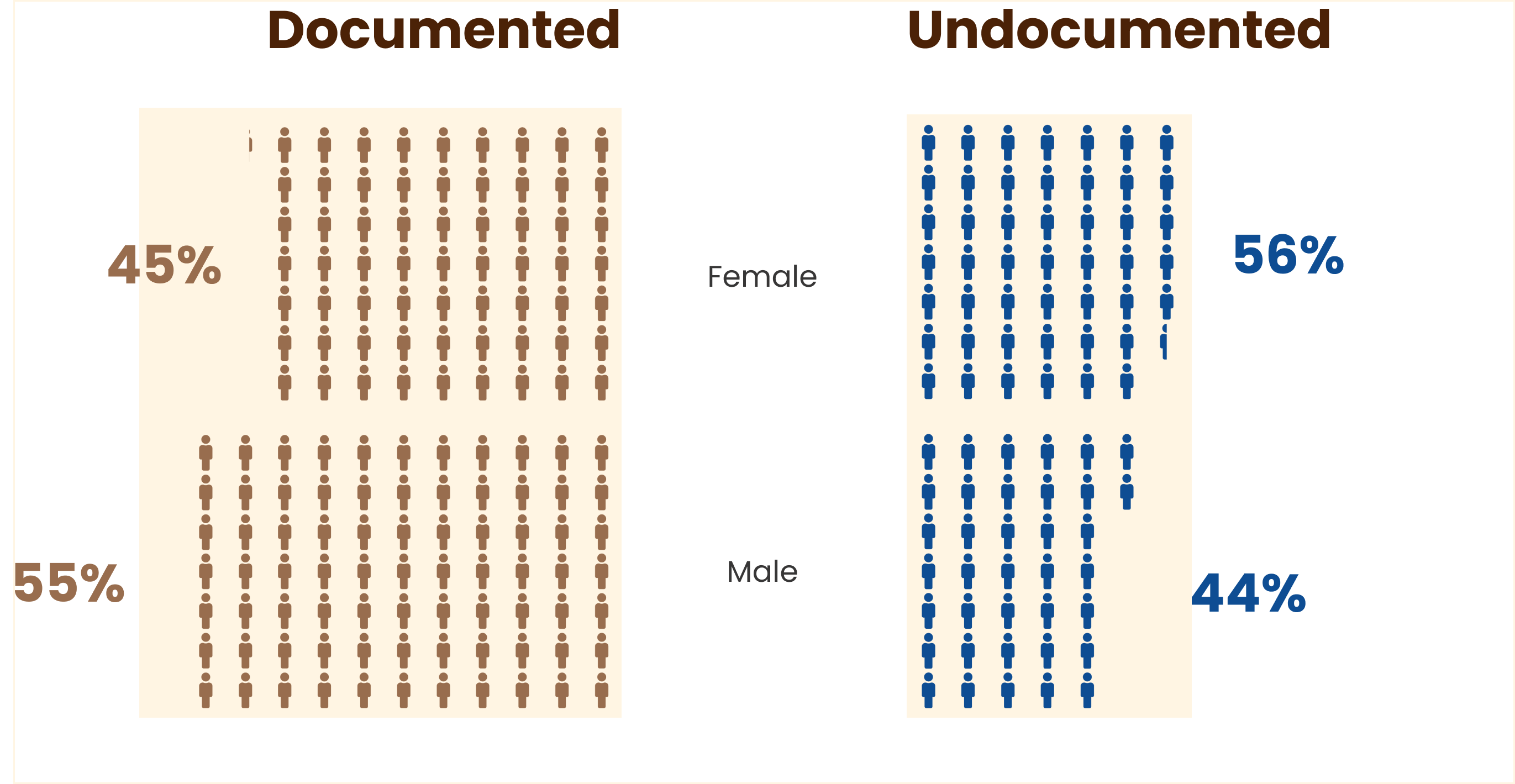Demographics
A total of 2,249 people were included in the final sample with 1,406 (63 percent) being documented migrants and 843 (37 percent) being undocumented migrants.
Breakdown of demographics

There is a slightly higher number of undocumented females in both percentage and absolute terms (475 undocumented females compared to 368 males). This corroborates other similar studies meaning that females are more likely to be in more vulnerable and insecure positions and subject to discriminatory hiring practices.
The age distribution shows that migrants tend to be below 34 years old, whilst undocumented migrants tended to be slightly younger on average. Younger migrants are more likely to experience lower wages and have less extensive support networks or awareness on how to deal with exploitation.
The majority of the migrants have either never attended school (11 percent) or have completed less than 5 years of basic education (41 percent). A considerable number also completed only up to primary school (35 percent). Furthermore, undocumented migrants generally possess even less formal education. These statistics underscore a relatively low level of formal education among the migrant population, a factor that could potentially influence their employment prospects and working conditions.
A total of 22 percent of those surveyed had children in Thailand, of which 77 percent belonged to documented migrants. Undocumented migrants were more likely to leave their children in Myanmar. This is because there are limited legal pathways for migrants to bring their family with them to Thailand which is discussed later in the report.
